

Part II: Salt Tectonics Interpretation Workshop associated with Salt
A) Gulf of Mexico Geological Context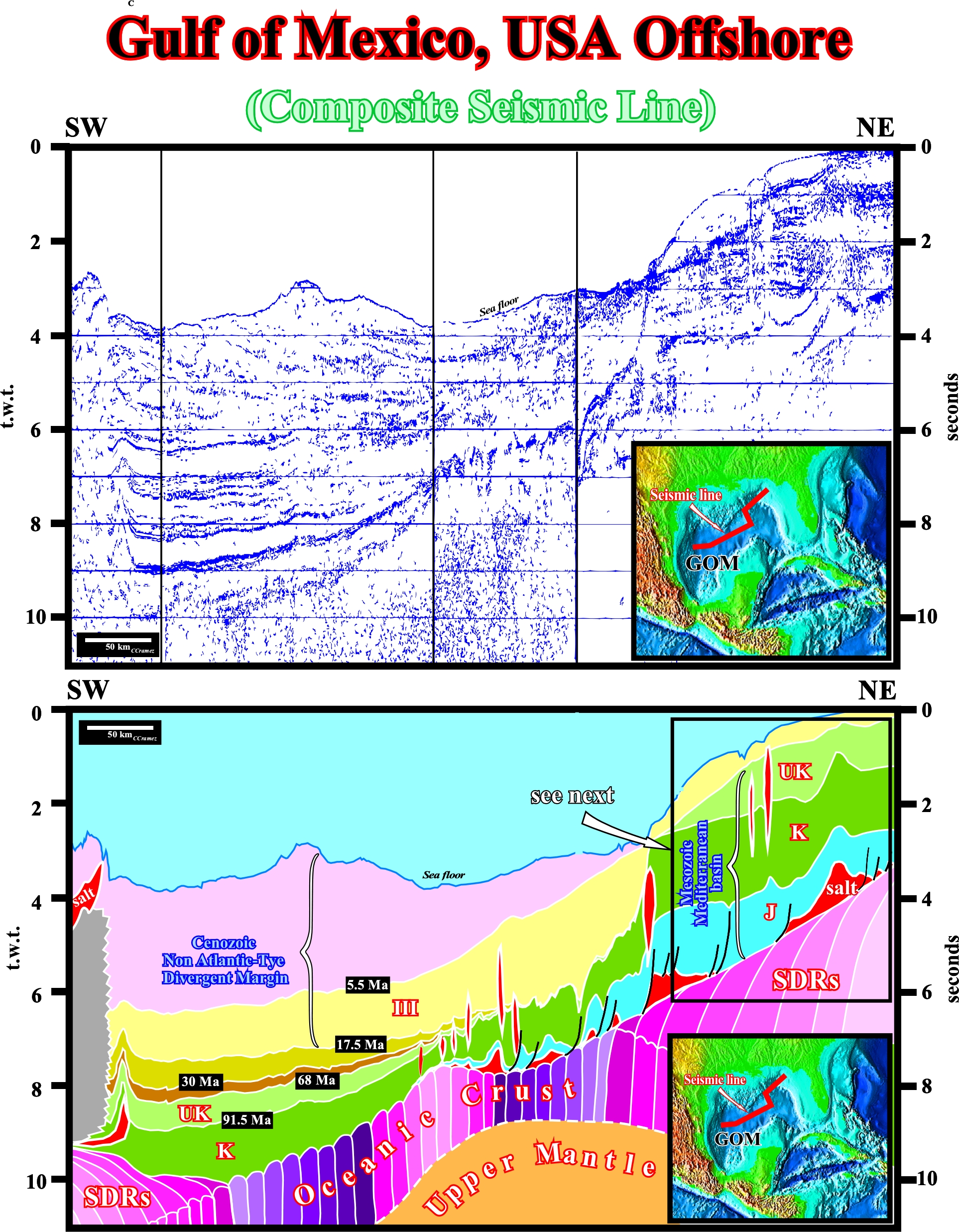
Fig. 320 - This composite tentative geological interpretation of a seismic line across the Gulf of Mexico corroborates the hypothesis of a volcanic-margin type of opening for the Gulf. There is a strong evidence of volcanic structures, which lateral succession suggests a progressive drowning of the spreading centres. On the tentative, the transition of the sub-aerial crust (SDRs) to the oceanic crust (sheeted dykes) is quite plausible. Above the volcanic crust it is, easily, to recognize a Mesozoic Mediterranean-type basin overlain by a Cenozoic non Atlantic-type divergent margin. In the middle of the seismic line, the distal part of the deep-water Mississippi fan is obvious to the eye.
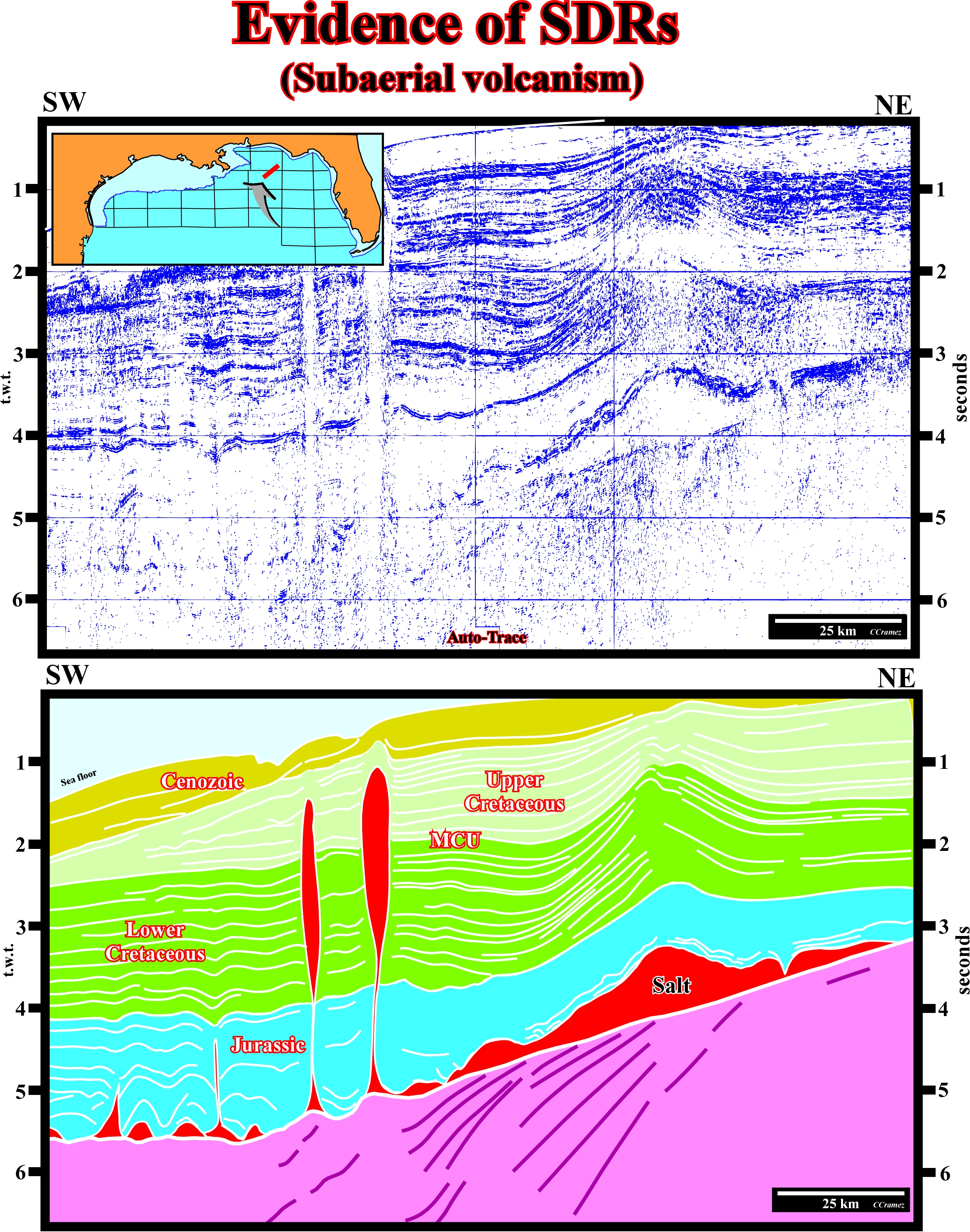
Fig. 321- In 70's, the SDRs recognized on this tentative geological interpretation (see location on previous figure) were interpreted as Triassic rift-type basin until the well's result indicate a volcanic facies. As illustrated on next tentative interpretation, the new seismic data display all characteristics of the sub-aerial lava flows.
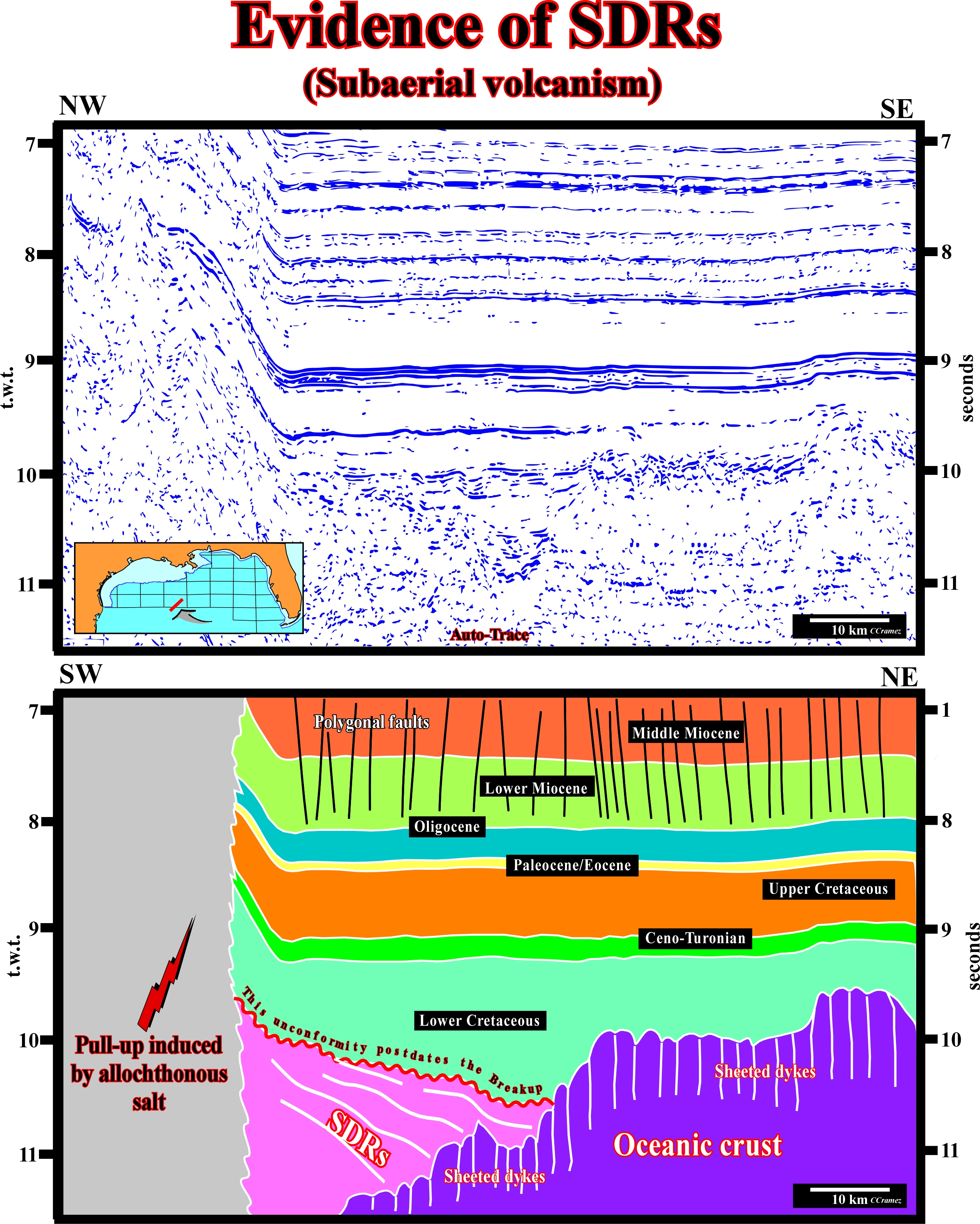
Fig. 322- On this seismic line the passage of the sub-aerial lava flows (seaward dipping reflectors) to the sheeted dykes of the oceanic crust is plausible (more evident in the original seismic line)
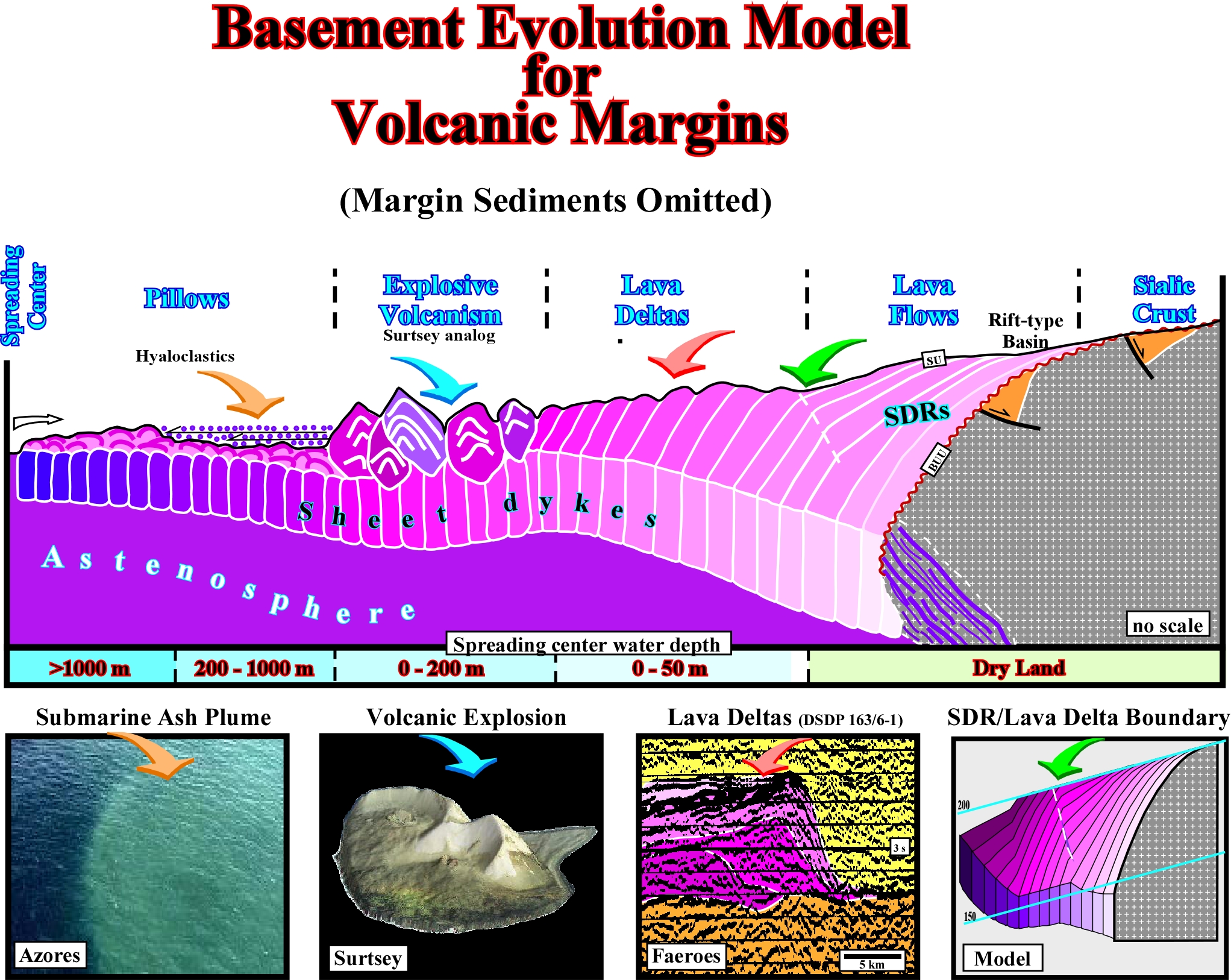
Fig. 323 - As here depicted, it seems that different volcanic structures are formed function of the water depth. of the spreading centres. In dry land only the more distal (far away of the spreading centres) are generally recognized. When the spreading centre is under a water depth ranging between 0 and 50 meters, that is to say, when the spreading is sub-aerial, SDRs are predominant, but lava deltas are likely. Seaward, when the spreading centre is under 0-200 meters of water, explosive volcanism can occur. Since the water depth is higher than 200 meters oceanic crust predominates with local deposition of the hyaloclastics derived from the explosive volcanism.
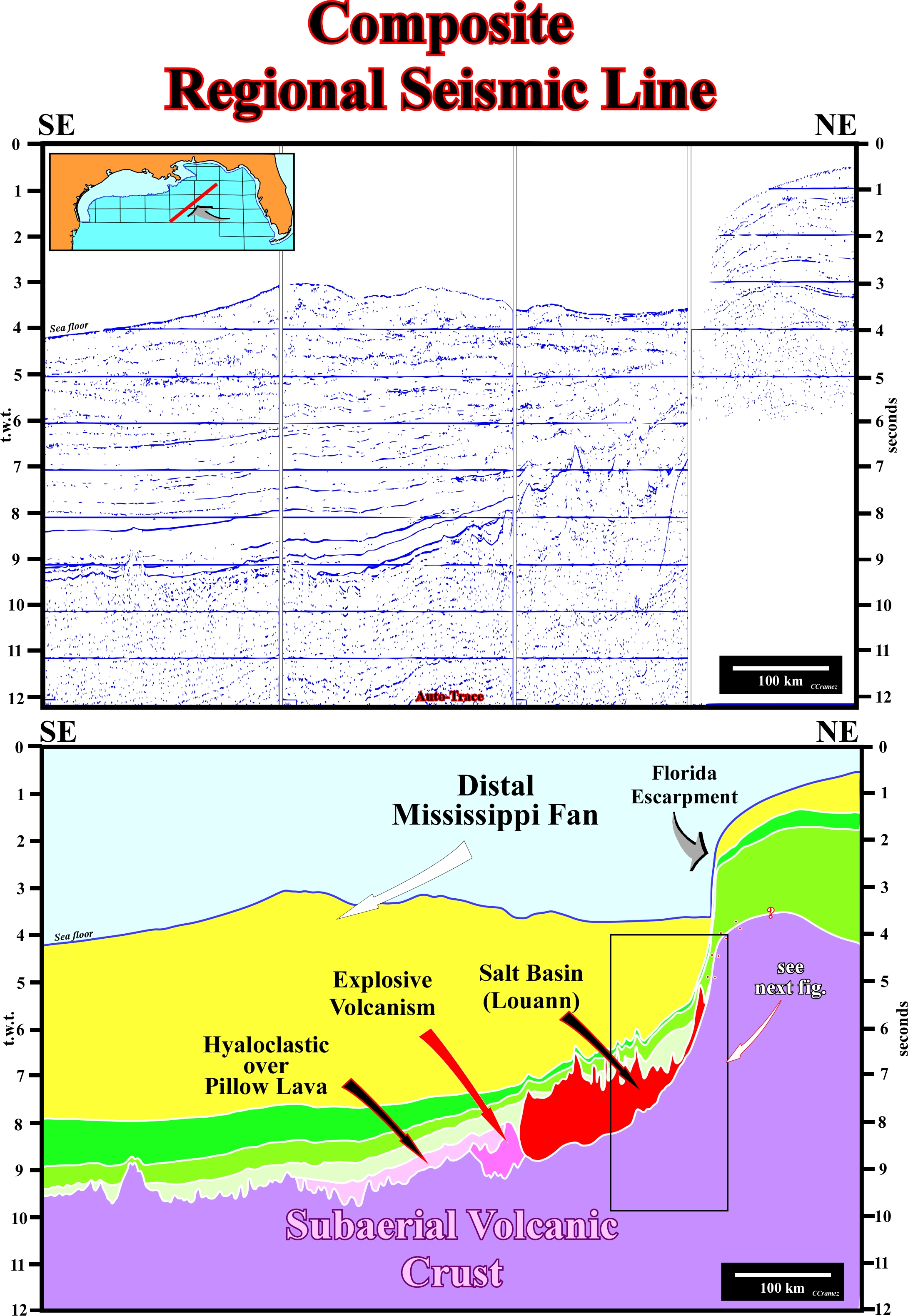
Fig. 324- Seward of the Florida Escarpment, the Louan salt basin is clearly recognized as well as the volcanic crust, that is to say, the sub-aerial lava-flows and the oceanic crust, which are better illustrated on the next autotraces.
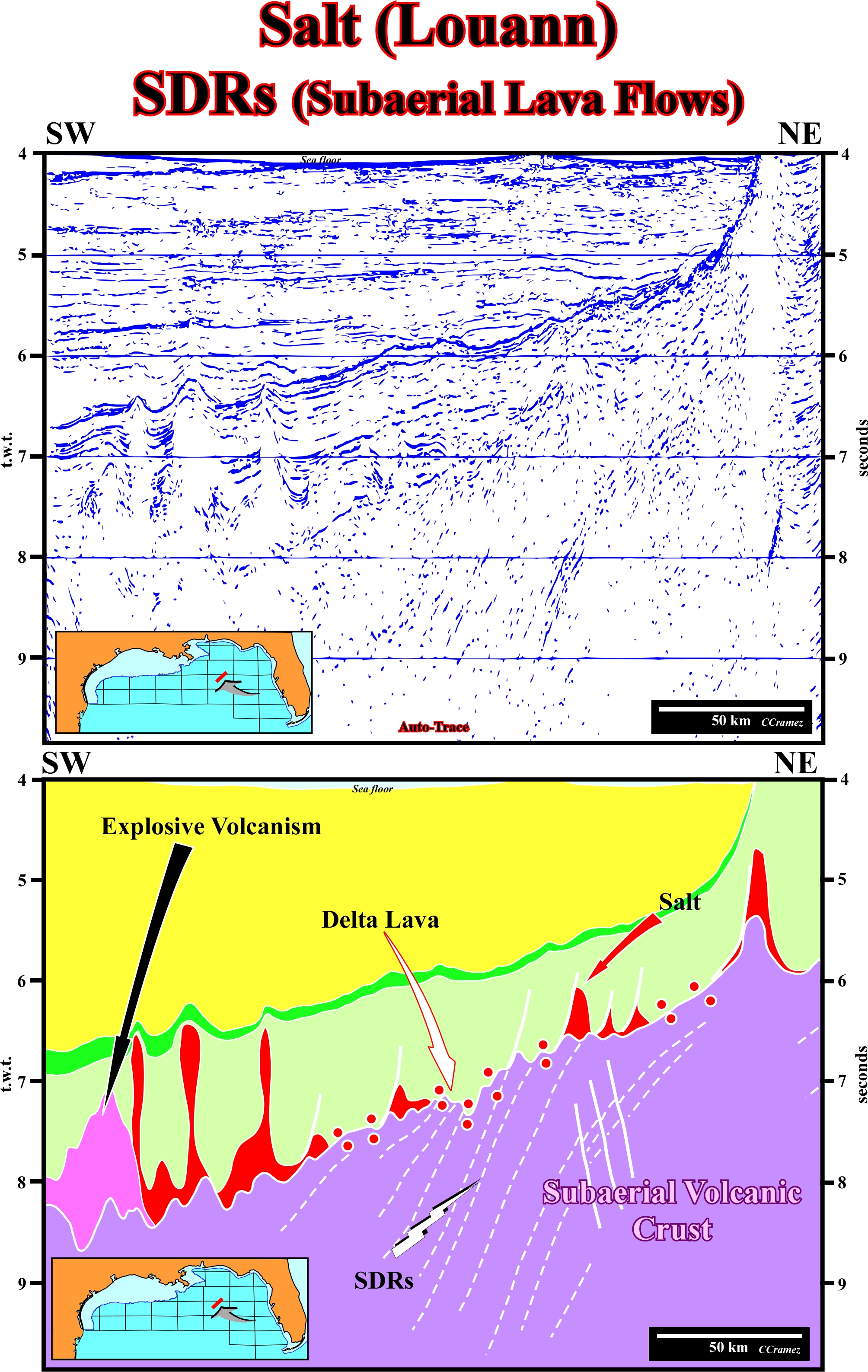
Fig. 325 - On this tentative geological interpretation of a close-up of the previous tentative, below the evaporitic interval, which underline the breakup unconformity, not only the seaward dipping reflectors are obvious, but lava-deltas as well. The seaward dipping reflectors, that is to say, the sub-aerial lava flows are evident. Similarly, few lava-deltas are visible in the centre of the line. In fact, lava-deltas form wherever sub-aerial flows of lava enter standing bodies of water. The lava cools and breaks up as it encounters the water, with the resulting fragments filling in the seabed topography such that the sub-aerial flow can move further offshore. Be aware of the explosive volcanism (in rose on this tentative), that, in this line, seems to halt the down-dip displacement of evaporitic interval. The salt layer postdate the volcanic interval and, probably, the brine was enriched hydrothermally.
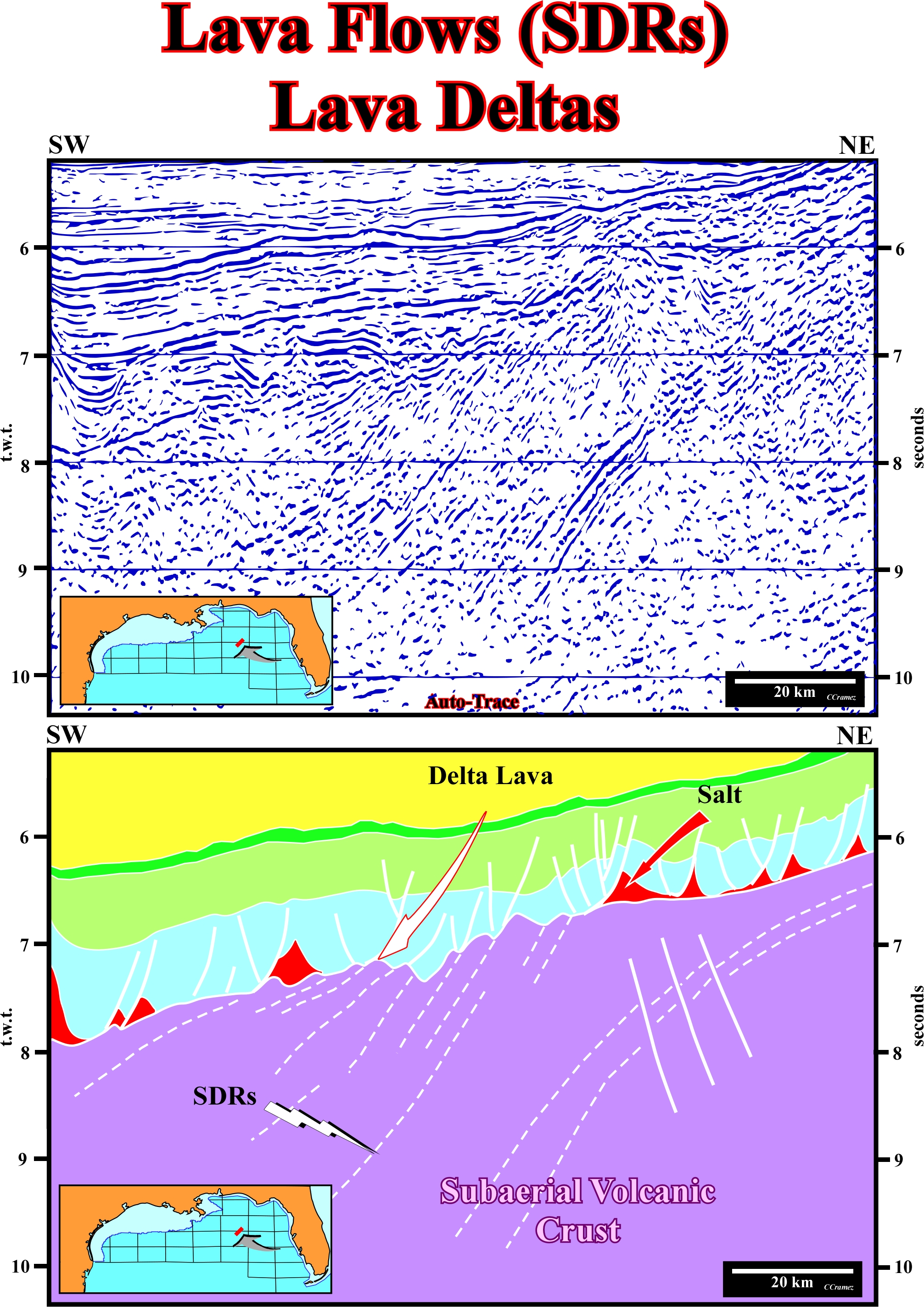
Fig. 366 - On this close-up of the previous auto-trace delta lavas are evident. They strongly suggest the presence of a water body (water depth 0-50 meters) eastward of the expansion centres (in direction of the continent) in which the lava flows frozen.
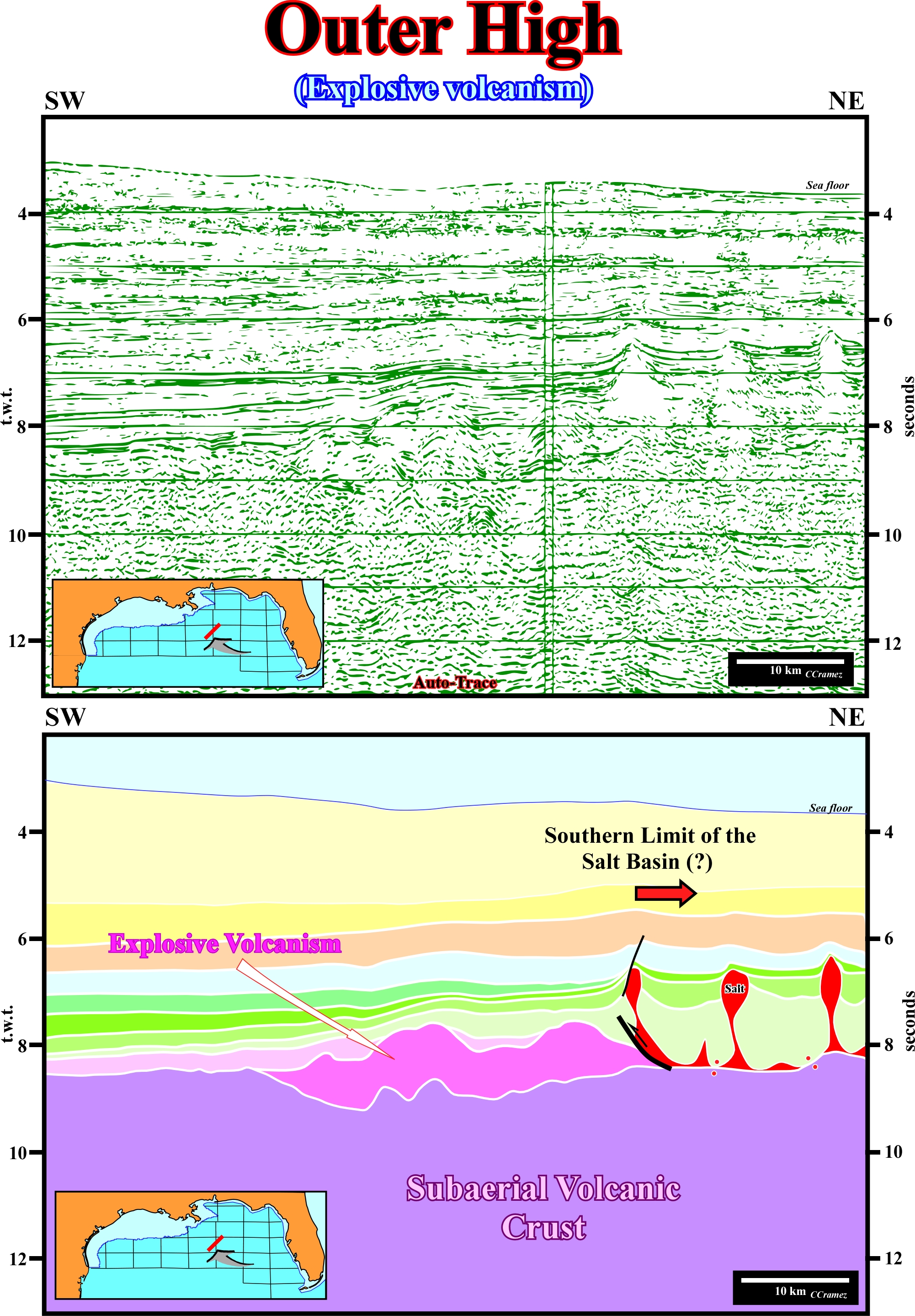
Fig. 327 - Here, the southern limit of the salt basin is easily recognized, as well as, the structures associated with explosive volcanism (water depth 0-200 meters).
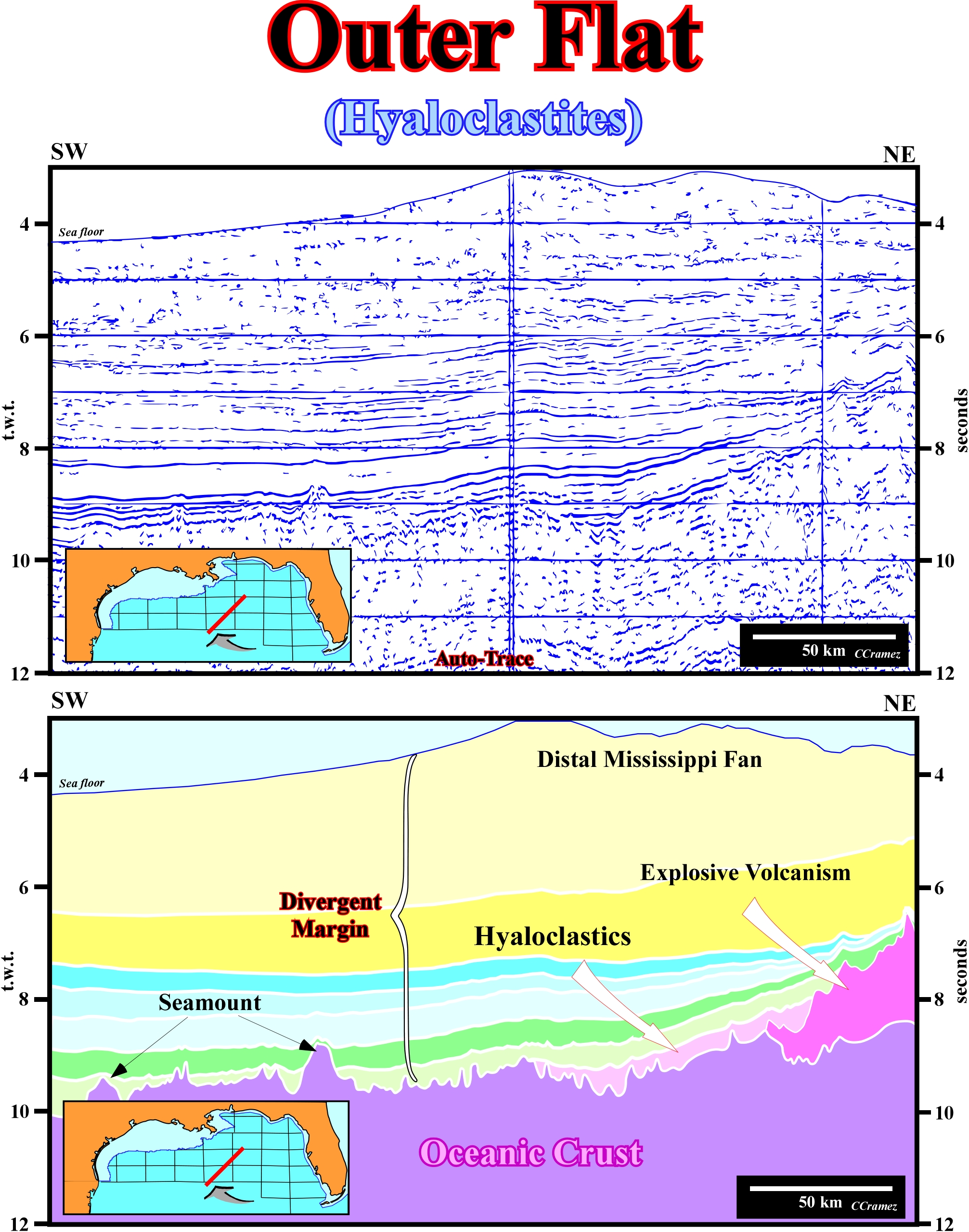
Fig. 328 - Seaward of the explosive volcanism the oceanic crust is well marked by the sea-mounts anomalies. Hyaloclastics, associated with the explosive volcanism, are likely are likely seaward above the oceanic crust. The bathymetric anomaly visible on this auto-trace is induced by the modern distal Mississippi fan.
to continue press
next